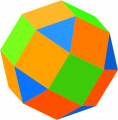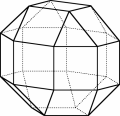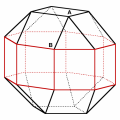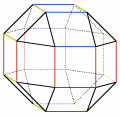How many uniform polyhedra are there, and what is their structure?
To begin with, there are five regular polyhedra.
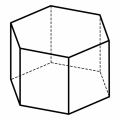 Another standard example (more precisely a family of infinitely many examples) is given by prisms. A right prism with basis a regular polygon is a (4,4,...) uniform polyhedron as long as the height of the prism makes all the lateral faces squares.
Another standard example (more precisely a family of infinitely many examples) is given by prisms. A right prism with basis a regular polygon is a (4,4,...) uniform polyhedron as long as the height of the prism makes all the lateral faces squares.
There are infinitely many uniform polyhedra among prisms, one for every regular polygon which is fixed like its basis - in particular, if the basis is a square you get a cube). Here on the left you may see a (4,4,6).
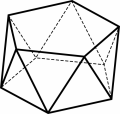
There is another family of polyhedra (maybe less known), which contains infinitely many uniform polyhedra: it is the family of antiprisms. Here on the right you may see a uniform antiprism of type (3,3,3,5): each vertex is adjacent to three equilateral triangles and a pentagon.
It is easy to imagine how you can get a uniform polyhedron if you start from any regular polygon and not just from a pentagon. In particular, if the basis is an equilateral triangle, you get the octahedron).
Are there other uniform polyhedra in addition to prisms, antiprisms and regular polyhedra? How many and which ones? In fact there are some of them, but not too many: thirteen all together, which are sometimes called archimedean polyhedra. If we want to list them, as we did for the others, with a numerical symbol, the full list can be given in the following table:
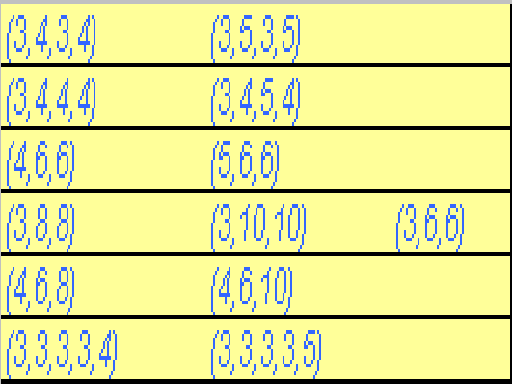
The table has been made following a pattern which can be useful to describe the corresponding polyhedra. The polyhedra in the first column are related to the cube, those in the second are related with the dodecahedron and those in the third column with the tetrahedron.
Almost all the polyhedra in the first column have the same symmetry of the cube. They can be seen in a kaleidoscope, in particular that associated with the cube. Only the polyhedron on the last row has a symmetry which is similar to that of a cube, but differs from it because it contains only rotations - thus it can not be seen in a kaleidoscope.
Analogously, all the polyhedra in the second column - except the last one -, scan be seen in the kaleidoscope of the dodecahedron; those in the last column can be seen in the kaleidoscope of the tetrahedron.
The row layout is not random. For instance, the (3,8,8) polyhedron represented below can be obtained from a cube by "smoothing" the vertices so that one gets equilateral triangles and regular octagons.
The other two polyhedra in the same row of the (3,8,8) are obtained in the same way, but starting from a different polyhedron. To obtain a (3,10,10) one starts from a dodecahedron and to obtain a (3,6,6) one starts from a tetrahedron.
Something similar occurs for the other rows of the table.
People who like numerical patterns may have noticed that the symbols of the second column can be obtained from the corresponding ones of the first column by substituting some "4" in "5" and some "8" in "10". How can we explain this phenomenon? And why is only the central "4" in (3,4,4,4) exchanged with a "5" and not the other two "4"? If you observe the polyhedra that you find below, you may find an answer...




